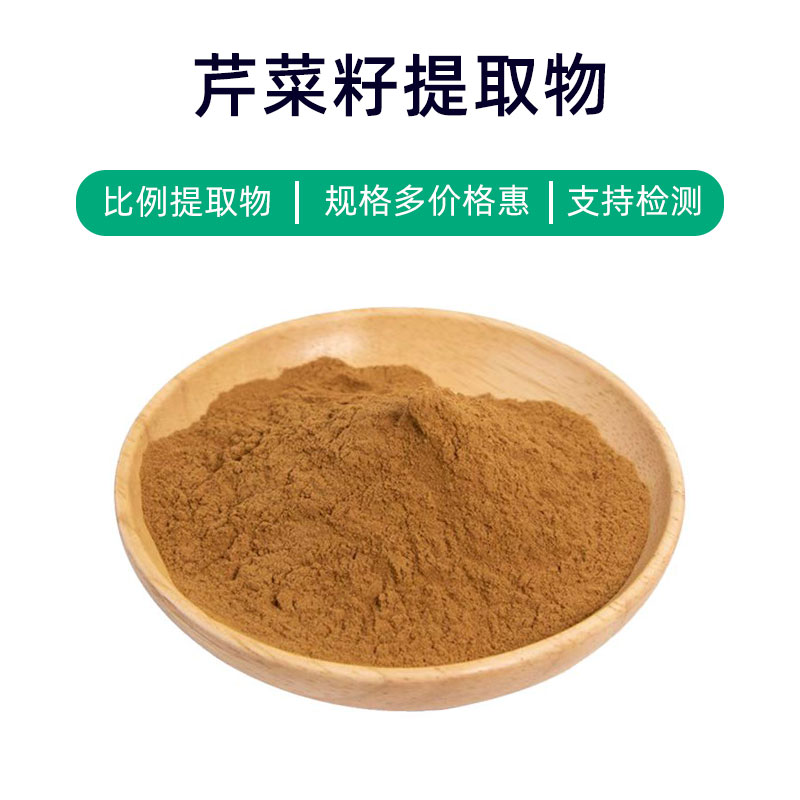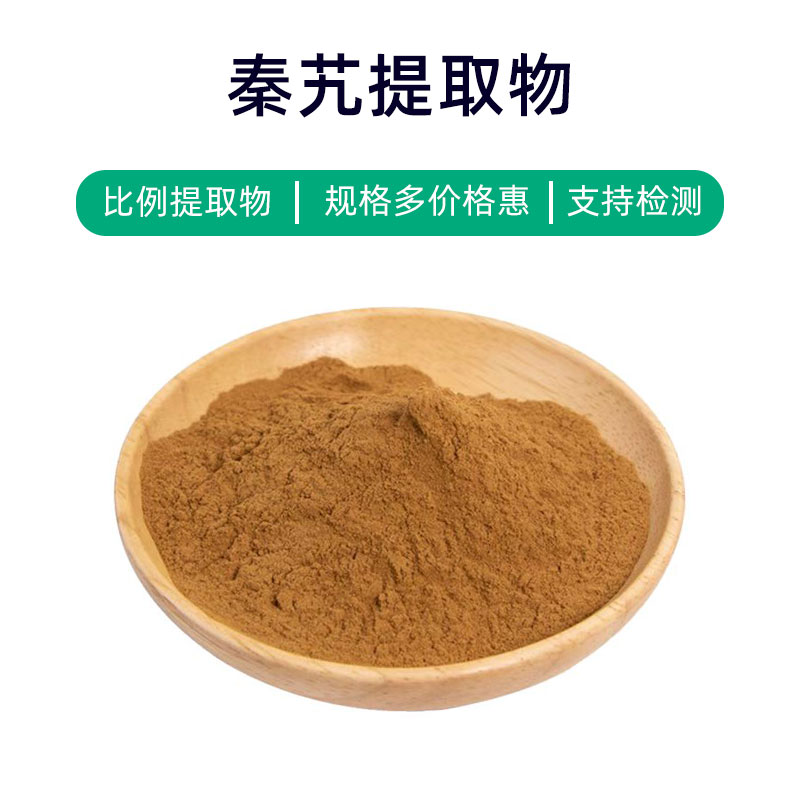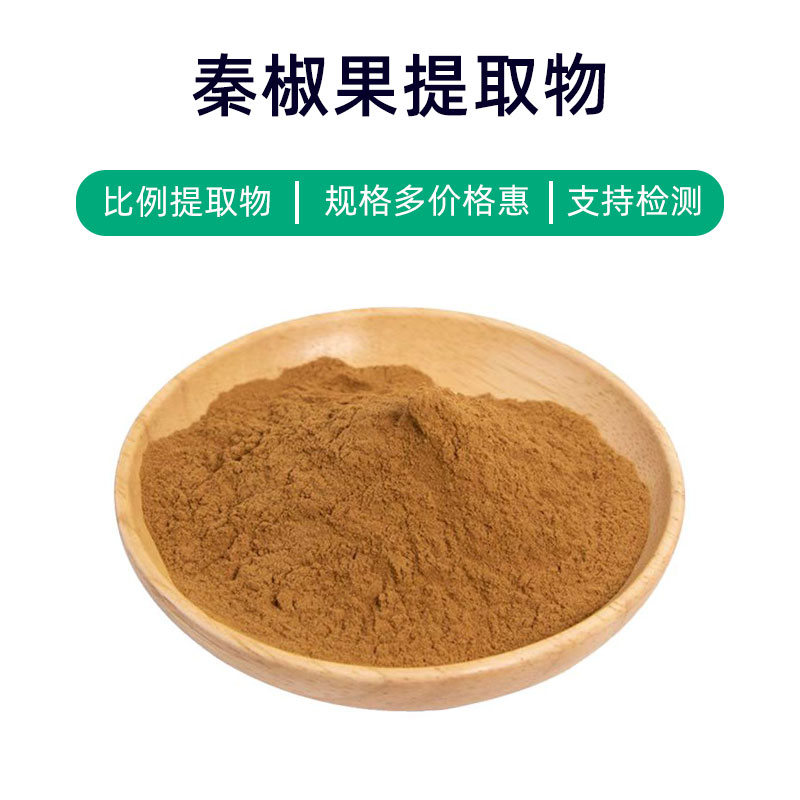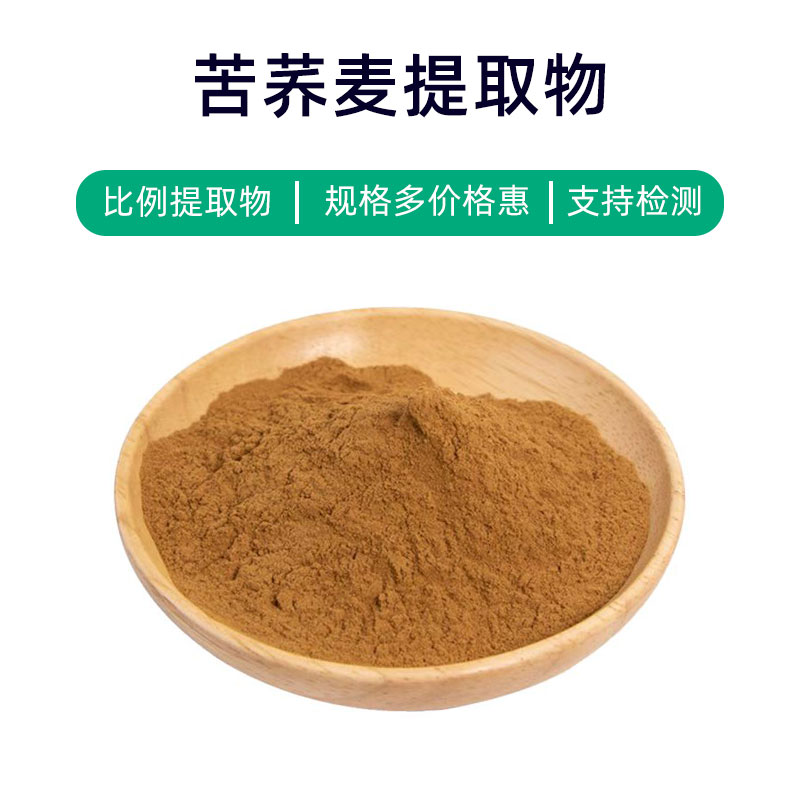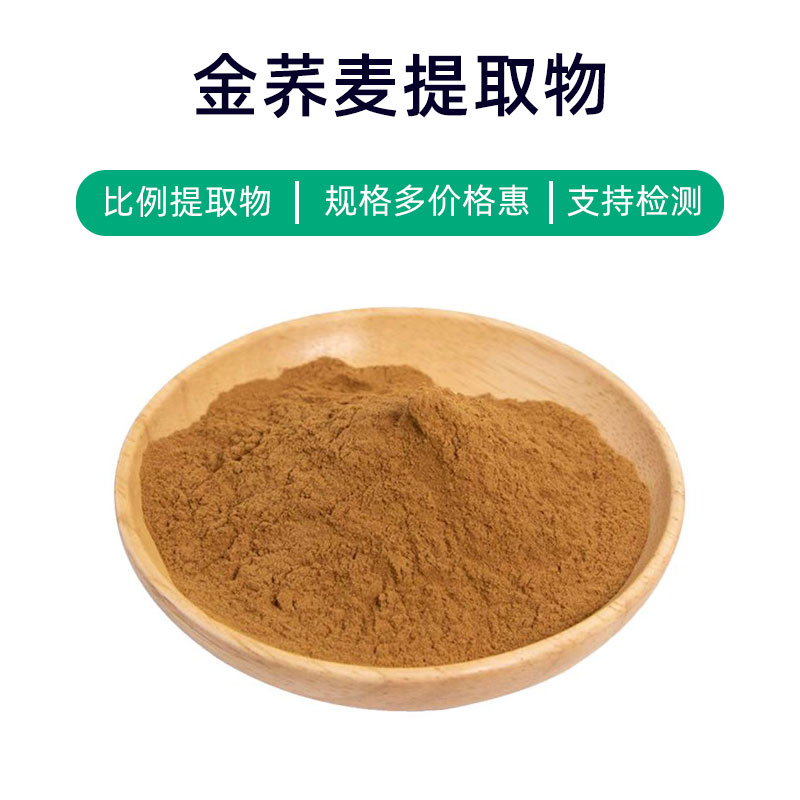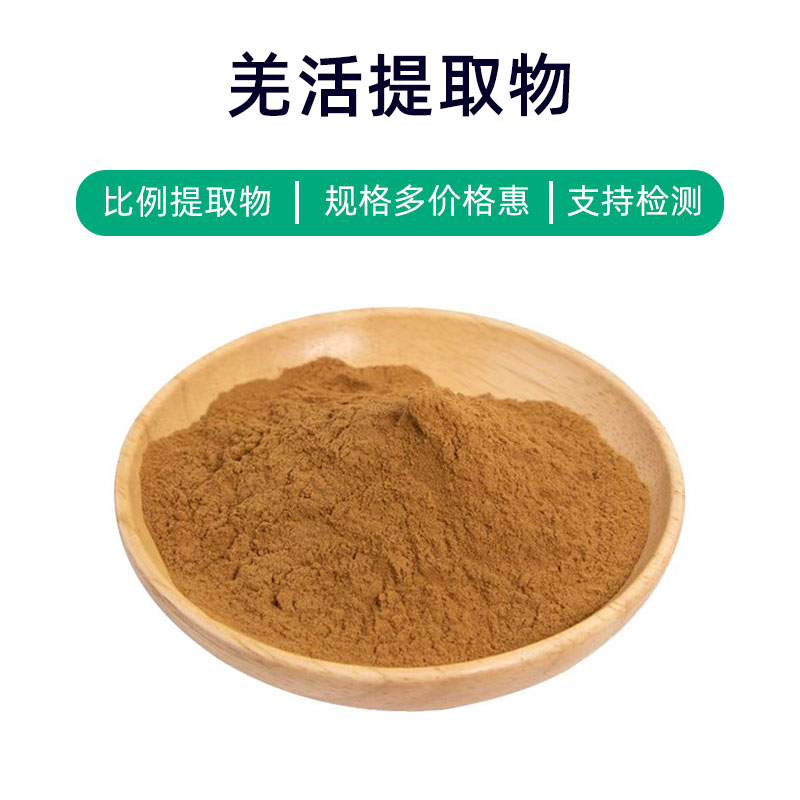Product Introduction for Centella Asiatica Extract
Centella Asiatica Extract is a natural plant extract obtained from the Centella Asiatica plant, with key components including triterpenoid saponins (such as asiatic acid and madecassic acid), polysaccharides, and alkaloids. These components give the extract various benefits and applications.
First, Centella Asiatica Extract is widely used in the pharmaceutical field. It is often utilized in the preparation of various medications, such as topical ointments and oral tablets. Its anti-inflammatory, antioxidant, and wound healing properties are considered beneficial for treating skin inflammation, wounds, and scars.
Second, Centella Asiatica Extract is also commonly used in the health supplement industry. Its polysaccharides and alkaloids contribute to health benefits, particularly in improving skin elasticity and slowing aging. Therefore, it is frequently added to various health products, such as skincare items and dietary supplements, to enhance overall health and beauty.
Finally, in the cosmetics sector, Centella Asiatica Extract is a popular ingredient. Its benefits include pore tightening, balancing oil secretion, and soothing the skin, making it widely applied in various facial skincare products, toners, and masks to improve skin texture, purify skin, and enhance skin health.
Overall, as a natural plant extract, Centella Asiatica Extract has multiple benefits, including anti-inflammatory effects, wound healing promotion, and improving skin elasticity, making it extensively used in the fields of pharmaceuticals, health supplements, and cosmetics, providing numerous benefits for health and beauty.
Production Process for Centella Asiatica Extract
The production process for Centella Asiatica Extract typically involves the following key steps:
- Collection and Preparation: First, fresh Centella Asiatica plants are collected and undergo preliminary processing, such as washing and air drying, to remove impurities and contaminants.
- Crushing and Grinding: The processed Centella Asiatica plants are usually crushed and ground to enhance extraction efficiency. This step aims to break down plant tissues and increase surface area to facilitate subsequent extraction.
- Extraction: The crushed plant material is typically extracted using solvent extraction methods. Common solvents include ethanol, water, and methanol. During extraction, methods such as soaking, heating, or cyclic extraction are used to thoroughly dissolve the active components in the plant.
- Filtration and Concentration: After extraction, the liquid needs to be filtered to remove residues and impurities. Subsequently, concentration techniques (such as vacuum concentration or spray drying) are applied to evaporate the solvent from the extract, yielding a concentrated extract.
- Refinement and Purification: The concentrated extract undergoes further refinement and purification to eliminate possible impurities and unwanted components, enhancing the product's purity and quality.
- Drying and Final Product: Finally, the refined extract is dried to reduce moisture content, resulting in the final product. Drying methods usually include spray drying or vacuum drying to ensure product stability and long-term storage.
- Packaging and Storage: After passing quality inspection, the final product is packaged and labeled, then stored in a cool, dry, well-ventilated area, avoiding direct sunlight and high temperatures, to ensure quality and stability.
Through these processing steps, high-quality Centella Asiatica Extract can be produced for applications in pharmaceuticals, health supplements, and cosmetics.
Effects and Side Effects of Centella Asiatica Extract
Centella Asiatica (scientific name: Cissus quadrangularis) extract is a commonly used herbal extract with multiple benefits and effects, including the following aspects:
- Bone Health: Centella Asiatica Extract is widely utilized in the field of bone health. Studies show that it is rich in various bioactive components, such as quadrangularis, phenolic compounds, and plant sterols, promoting increased bone density, growth, and repair, aiding in the prevention of osteoporosis and fractures.
- Joint Health: Centella Asiatica Extract is believed to offer significant joint health benefits. With a wealth of natural plant compounds, it exhibits anti-inflammatory and antioxidant properties that help alleviate joint pain, ease arthritis, and rheumatoid arthritis symptoms, and improve joint mobility.
- Antioxidant Effects: Centella Asiatica Extract is rich in various antioxidants, including polyphenols and vitamins, providing antioxidant effects that help neutralize free radicals, reduce oxidative stress, and slow the aging process.
- Immune System Enhancement: Centella Asiatica Extract is also thought to bolster the immune system. Its abundant bioactive compounds can regulate immune cell functions, enhance the body’s resistance, and prevent infections and diseases.
- Digestive Promotion: Traditionally, Centella Asiatica Extract is used to promote digestive health. Its natural compounds are known to soothe the gastrointestinal tract, stimulate appetite, and enhance digestive functions, helping to relieve indigestion and gastrointestinal issues.
- Blood Sugar Regulation: Some studies suggest that Centella Asiatica Extract may play a role in lowering blood sugar levels. Its active components can influence insulin sensitivity and glucose metabolism pathways, aiding in blood sugar control and providing auxiliary treatment for diabetic patients.
Despite its numerous benefits, caution is advised when using Centella Asiatica Extract. Some individuals may experience allergies or gastrointestinal discomfort as adverse reactions. Therefore, it is best to consult a doctor or professional before use and follow the recommended dosage and method. Special populations such as pregnant women, nursing mothers, and children should avoid using it or do so under medical guidance.
Applications and Dosage of Centella Asiatica Extract
Centella Asiatica Extract has various applications in pharmaceuticals, food, and cosmetics, with the following main uses and dosages:
Pharmaceutical Applications:
- Bone Health: Centella Asiatica Extract is commonly found in products aimed at bone health, such as bone density boosters, joint health supplements, and fracture healing aids. The usual method of administration is oral, with dosage forms including capsules, tablets, or liquid formulations. Common dosages range from 200-500 mg, taken 1-2 times daily.
- Joint Health: Centella Asiatica Extract is used for treating joint pain, arthritis, and rheumatoid arthritis. Typical dosage forms are oral liquids or capsules, recommended at 200-500 mg 1-2 times daily.
- Digestive Health: Centella Asiatica Extract can help improve indigestion and gastrointestinal issues. Common forms include oral liquids or capsules, with a recommended dosage of 200-500 mg, taken 1-2 times daily.
Food Applications:
- Functional Foods: Centella Asiatica Extract is often added to functional foods, such as beverages for bone health, joint care nutritional products, and immune-boosting items. Dosages are typically determined based on the product formulation and should be followed according to product guidelines.
Cosmetic Applications:
- Skincare Products: Centella Asiatica Extract is prevalent in skincare products due to its antioxidant, anti-inflammatory, and soothing effects. Standard forms include facial serums, creams, and masks. Dosages should be based on product guidelines, typically applied gently to clean skin as needed.
- Hair Care Products: Centella Asiatica Extract is also found in hair care products, like shampoos, conditioners, and hair masks. It promotes scalp health, alleviates scalp itching, and enhances hair elasticity. Dosages depend on product guidelines and should be applied as needed to damp hair, massaged gently, and rinsed thoroughly.
Overall, Centella Asiatica Extract has extensive application prospects in pharmaceuticals, food, and cosmetics, but users should adhere to the recommended dosages and methods outlined in the product instructions while considering individual differences and potential allergic reactions. If any adverse reactions or discomfort occur, usage should be stopped immediately, and a doctor’s advice should be sought.
Introduction to the Source Plant of Centella Asiatica Extract, Distribution, and Growing Environment
Centella Asiatica (scientific name: Cissus quadrangularis) is a widespread perennial vine belonging to the grape family (Vitaceae). Below is detailed information on the source plant, distribution, and growing environment:
Source Plant Introduction:
Centella Asiatica is a climbing plant with a square-shaped stem, thus its name. Its leaves are elliptical or ovate, typically measuring about 3-6 cm in length and 2-4 cm in width. The flowers are small and green, forming in umbels, and the fruits are berries that turn black when mature.
Distribution:
Centella Asiatica is native to the Indian subcontinent and predominantly found in India, Sri Lanka, and parts of Africa. Additionally, it has a wide distribution in other Asian countries and regions such as Bangladesh, Nepal, Thailand, and the Philippines.
Growing Environment:
Centella Asiatica typically thrives in arid or semi-arid regions, preferring warm and dry climates. It can grow in various soil types, including sandy, clay, and limestone soils but thrives best in well-drained soils. In nature, it often grows on hillsides, rocky places, and forest edges.
Growth Habits:
Centella Asiatica is a drought-resistant plant that requires ample sunlight for optimal growth. It grows quickly, climbing around nearby supports such as trees, walls, and other plants. Under suitable growing conditions, it can reach several meters in height, forming dense vine cover.
In summary, Centella Asiatica is a resilient and adaptable vine species that thrives mainly in tropical and subtropical regions, surviving well in arid conditions and showing strong soil adaptability, commonly found in mountainous and rocky areas.
Processing and Storage of Centella Asiatica Extract
The processing of Centella Asiatica Extract typically includes the following steps: starting with the collection of stems, leaves, or roots of the plant, followed by washing and treatment to remove impurities. Next, the processed plant material is ground or crushed to increase extraction efficiency. Suitable extraction methods, such as water extraction, ethanol extraction, or supercritical fluid extraction, are employed to extract the active components from the plant. Finally, through concentration, drying, and other processes, the final product of Centella Asiatica Extract is obtained.
For storage, Centella Asiatica Extract should be kept in a cool, dry place, protected from direct sunlight and high temperatures to prevent the degradation of its active ingredients. It is advisable to store the extract in a sealed container or bag, ensuring that it is well-sealed to prevent moisture and dust intrusion. Under appropriate storage conditions, Centella Asiatica Extract can have a shelf life of several years, maintaining stability and efficacy.
Monica Sun is a seasoned expert in the plant extraction industry with over a decade of experience in research and production. She specializes in the extraction and purification of plant active ingredients, focusing on driving innovation in natural product applications. Monica has participated in the development of multiple functional plant extracts, delivering high-value natural raw material solutions for the health food, pharmaceutical, and dietary supplement sectors.









